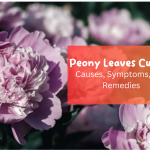Fiddle leaf figs (Ficus lyrata) are beloved houseplants cherished for their stunning foliage and elegant appearance. However, like any living organism, they are vulnerable to diseases and infections. One common issue that fiddles leaf fig owners may encounter is a bacterial infection. This comprehensive guide will delve into the causes, symptoms, prevention, and treatment options for fiddle leaf fig bacterial infection.
Understanding Fiddle Leaf Fig Bacterial Infection:
Bacterial infections in fiddle leaf figs can be caused by various strains of bacteria, including Pseudomonas, Xanthomonas, and Erwinia. These bacteria can enter the plant through wounds, cuts, or natural openings such as stomata. Once inside, they rapidly multiply under favorable conditions. Bacterial infections weaken the plant’s immune system, making it more susceptible to complications and potentially fatal consequences if left untreated.

Symptoms of Fiddle Leaf Fig Bacterial Infection:
Identifying the symptoms of bacterial infection is crucial for early intervention. Here are some common signs that may indicate a bacterial infection in your fiddle leaf fig:
- Leaf Spots: Dark or water-soaked spots may appear on the leaves. They typically start as small lesions and gradually enlarge. A yellow halo often surrounds these spots.
- Leaf Drop: Infected leaves may turn yellow, wilt, and drop prematurely, even if the plant is well-watered; this is a response to the plant’s attempt to conserve energy and divert resources from the infected areas.
- Stem Rot: Bacterial infections can cause soft, mushy spots on the stem, leading to rotting and decay. If the branch feels slimy or emits an unpleasant odor, it may be a sign of bacterial infection.
- Discolored Sap: When infected, the sap of the fiddle leaf fig may turn dark or develop an unpleasant odor. This discoloration is a result of the bacterial activity within the plant.
- Stunted Growth: Bacterial infections can hinder the growth of new leaves and overall plant development. If your fiddle leaf fig seems to have stopped growing or is producing undersized or deformed leaves, it could indicate a bacterial infection.
Preventing Fiddle Leaf Fig Bacterial Infection:
Taking proactive measures to prevent bacterial infections is essential for maintaining a healthy fiddle leaf fig. Here are some preventive measures you can implement:
- Proper Watering: Overwatering can create a favorable environment for bacterial growth. Water your fiddle leaf fig only when the top inch of soil feels dry to prevent excessive moisture. Ensure that the pot has adequate drainage to avoid waterlogging.
- Sanitize Tools: Sterilize your gardening tools before using them on your fiddle leaf fig or other plants; this prevents the spread of bacteria from one plant to another. Wipe the devices with a solution of 70% isopropyl alcohol or bleach.
- Adequate Air Circulation: Ensure your fiddle leaf fig is placed in a well-ventilated area. Stagnant air can create a humid environment that promotes bacterial growth. Proper air circulation helps to keep the foliage dry and reduces the risk of infection.
- Balanced Nutrition: Providing your fiddle leaf fig with a balanced fertilizer helps to promote its overall health and strengthen its natural defense mechanisms. Ensure your fertilizer is appropriate for houseplants and follow the recommended application rates.

Treating Fiddle Leaf Fig Bacterial Infection:
If your fiddle leaf fig shows signs of bacterial infection, immediate action is necessary to prevent the disease from spreading and causing irreversible damage. Here are some treatment options you can consider:
- Pruning: Start by removing infected leaves, stems, and branches. Use sterilized pruning shears to make clean cuts. Please dispose of the affected plant material properly, as it can harbor bacteria and spread the infection.
- Isolation: Quarantine the infected plant to prevent the bacteria from spreading to other healthy plants. Please keep it away from other houseplants until it has fully recovered.
- Antimicrobial Treatment: Apply a suitable antibacterial treatment to the affected areas of the fiddle leaf fig. Copper-based fungicides or broad-spectrum bactericides can be effective in combating bacterial infections. Follow the manufacturer’s instructions carefully regarding application rates and frequency. Repeat the treatment as needed until the condition is resolved.
- Improve Cultural Conditions: Ensure your fiddle leaf fig receives adequate lighting, proper temperature, and optimal humidity. Providing the ideal growing conditions helps the plant recover from the infection and strengthens its natural defenses against future infections.
Conclusion:
Fiddle leaf fig bacterial infection can pose a severe threat to the health and vitality of your plant. By understanding the causes, recognizing the symptoms, implementing preventive measures, and taking appropriate treatment steps, you can effectively manage and overcome bacterial infections in your fiddle leaf fig. Regularly monitor your plant’s health, practice good hygiene, and provide optimal care to maintain a thriving and disease-free fiddle leaf fig in your home. Read article about Dying Overwatered Hibiscus and Monstera In The Wild in Avi Hoffman Garden.
FAQ
Bacterial root rot is a severe condition affecting fiddle leaf figs’ roots. To treat bacterial root rot, follow these steps:
1. Remove the plant from its pot: Gently remove the fiddle leaf fig and carefully inspect the roots.
2. Trim-affected roots: Trim away soft, slimy, or discolored roots using sterilized pruning shears. Make clean cuts to remove the infected portions.
3. Apply an antibacterial treatment: Use a suitable antibacterial solution or a commercial bactericide to treat the remaining healthy roots and the root ball. Follow the product instructions for proper application.
4. Repot the plant: Choose a clean pot with good drainage and fresh, well-draining soil. Repot the fiddle leaf fig, ensuring not to bury the stem too profoundly.
5. Adjust watering practices: After repotting, adjust your watering practices to ensure the soil is neither too wet nor too dry. Allow the top inch of soil to dry out before watering again.
Fiddle leaf figs are susceptible to various diseases. Some of the common conditions include:
Bacterial infection: Caused by bacteria entering the plant through wounds, resulting in leaf spots, stem rot, and leaf drop.
Fungal diseases: Fiddle leaf figs can be affected by fungal infections such as leaf spot diseases, powdery mildew, and root rot.
Anthracnose: A fungal disease that causes brown, necrotic lesions on leaves and stems.
Scale infestation: Scale insects are common pests that can attack fiddle leaf figs, sucking sap from the plant and causing leaf discoloration and stunted growth.
Spider mites: These tiny pests can infest the leaves, causing webbing, yellowing, and leaf drop.
Regular monitoring, proper care, and timely intervention can help prevent and manage these diseases in fiddle leaf figs.







